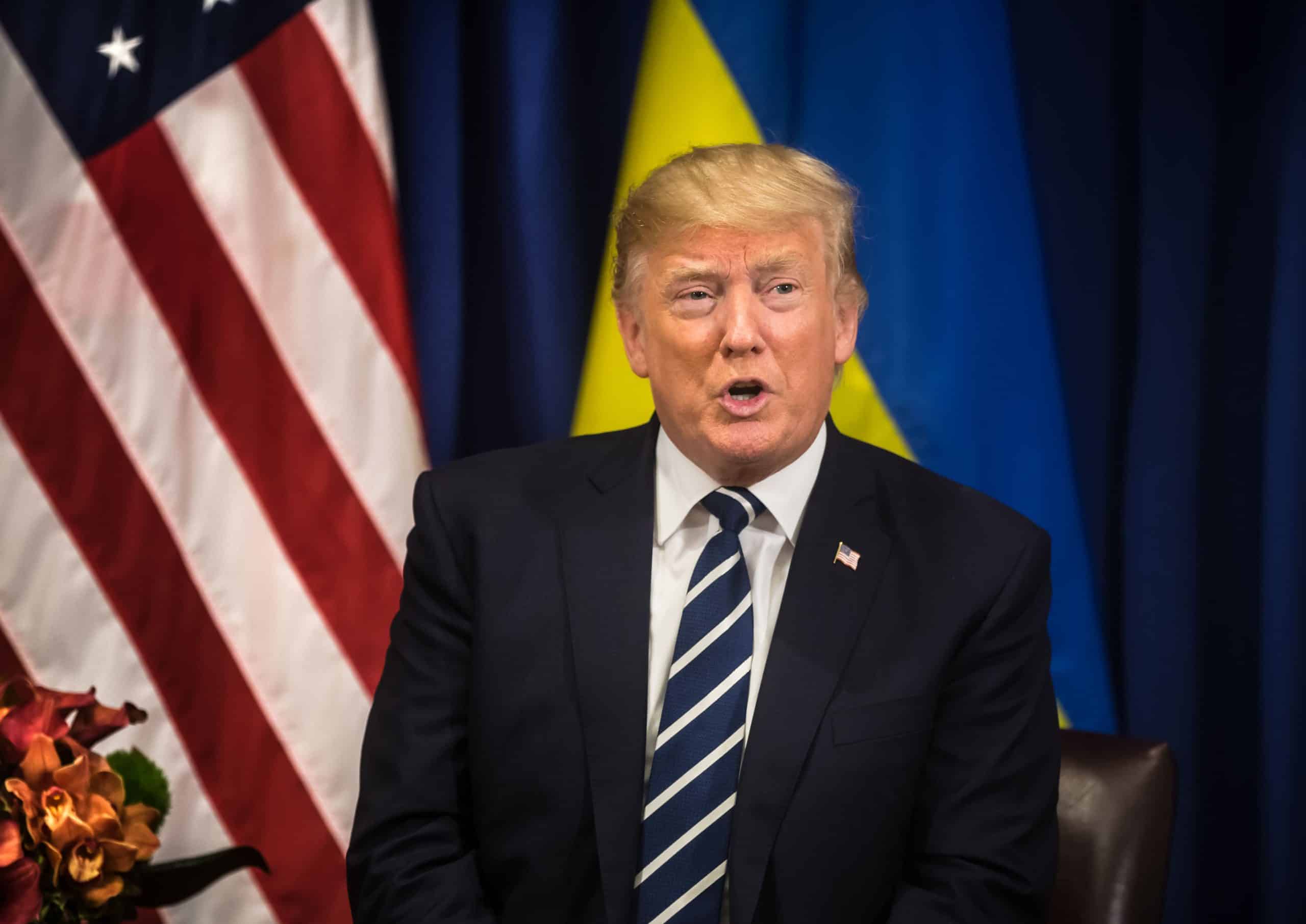Trump Reverses Course on Intel CEO Amid US-China Chip Showdown
The recent shift in Donald Trump’s stance on Intel’s CEO marks a significant moment in the ongoing US-China semiconductor conflict. This change reflects more than just a political repositioning; it highlights the complex intersection of leadership, technology, and international relations during a period of rising geopolitical tensions. As the United States and China continue to compete for technological dominance, Trump’s newfound support for Intel’s leadership sends ripples across global markets, foreign policy, and the technology industry at large.
The Significance of Trump’s Shift
Initially, Trump took a hardline approach towards companies engaged with China, emphasizing a tough stance on trade and technology exchanges. However, his pivot to back Intel’s CEO signals a more nuanced strategy that balances competitive pressure with collaboration. Given the crucial role semiconductors play in the modern economy—from powering smartphones to critical defense systems—this shift has implications for multiple stakeholders.
For investors, Trump’s support may stabilize Intel’s stock prices by signaling government backing, offering reassurance amid uncertainty. Consumers benefit as this stance suggests continued investment in chip production, ensuring a stable supply of components for everyday technology. Intel employees stand to gain from clearer leadership and potential government initiatives that may secure jobs and spur innovation. On the global stage, the change in tone reflects a broader US strategy: promoting domestic technological strength while countering foreign competition, particularly from China.
The US-China Chip Conflict
The semiconductor industry has become a key battleground in the US-China rivalry. China is aggressively investing in building an independent semiconductor supply chain, aiming to reduce reliance on foreign suppliers. This ambition poses significant challenges for American companies like Intel, which have traditionally dominated the chip market.
Trump’s endorsement of Intel’s CEO may hint at a shift in US policy focused on strengthening America’s technological edge. Such support could translate into enhanced government contracts, subsidies for domestic manufacturing, and tighter control over technology exports to China. This approach underscores the strategic importance of semiconductors as vital components of national security and economic resilience.
Strategic Implications for US Tech Companies
The reversal in Trump’s position extends beyond symbolism. It highlights the unique influence of political leadership on American business culture, especially in high-tech industries. Tech companies must now carefully navigate this evolving landscape, considering several factors:
-
Policy Decisions: Changes in trade policies or incentives may arise to support domestic chip production. Companies like Intel could benefit from government contracts or subsidies aimed at boosting local manufacturing.
-
Partnerships and Alliances: Firms collaborating with Intel may experience shifts in strategic alliances as government backing influences market dynamics.
-
Innovation and Global Competition: The focus on innovation will intensify, with companies prioritizing development of competitive products to counter Chinese alternatives on a global scale.
Strategies for Navigating the Geopolitical Landscape
US tech companies operating in semiconductor production face a complex geopolitical environment. To thrive, they need to adopt multifaceted strategies that address both risks and opportunities:
-
Diversify Supply Chains: Reducing dependence on any single country, particularly China, is critical. Building partnerships with suppliers in regions like Southeast Asia, Europe, or Mexico can help mitigate geopolitical risks.
-
Strengthen Domestic Production: Investing in local manufacturing aligns with US government goals and enhances supply chain resilience, reduces costs, and supports job creation.
-
Prioritize Research and Development: Focusing on emerging technologies such as AI, quantum computing, and 5G will enable companies to maintain a technological lead.
-
Collaborate Within the Industry: Forming alliances to share resources and expertise can improve innovation and competitiveness against global challenges.
-
Engage Policymakers: Active dialogue with regulators helps shape favorable trade policies and secures necessary support for industry growth.
-
Ensure Regulatory Compliance: Navigating complex international trade laws and intellectual property rules is vital to avoid penalties and protect innovations.
-
Emphasize Sustainability: Adopting environmentally friendly manufacturing practices meets growing consumer and governmental expectations, potentially unlocking incentives.
-
Invest in Workforce Development: Upskilling employees and collaborating with educational institutions helps build a talent pipeline suited to advanced semiconductor technologies.
-
Protect Intellectual Property: Robust IP safeguards are essential to defend innovations, particularly in markets with weaker legal protections.
Conclusion
Trump’s reversal regarding Intel’s CEO during the US-China chip showdown is more than a political maneuver; it signals a deeper recalibration of how the US supports its technology sector amidst fierce global competition. For American tech companies, the evolving geopolitical environment demands agility, innovation, and strategic foresight.
By investing in domestic capabilities, diversifying supply chains, fostering collaborations, and engaging with policymakers, US firms can position themselves to navigate uncertainties and capitalize on emerging opportunities. The decisions made today will shape the future of semiconductor production and technological leadership.
In this critical era, aligning corporate strategies with national interests and geopolitical realities will be key to ensuring that US technology companies not only survive but thrive in the increasingly competitive global arena.
Comparison, examination, and analysis between investment houses
Leave your details, and an expert from our team will get back to you as soon as possible
* This article, in whole or in part, does not contain any promise of investment returns, nor does it constitute professional advice to make investments in any particular field.
To read more about the full disclaimer, click here- orshu
- •
- 7 Min Read
- •
- ago 1 hour
 Market Closes Strong: A Look at Today’s Key Performance Indicators
Market Closes Strong: A Look at Today’s Key Performance Indicators
Navigating the Closing Bell: A Look at Today's Americas Market Performance As the final bell rings and markets close across
- ago 1 hour
- •
- 7 Min Read
Navigating the Closing Bell: A Look at Today's Americas Market Performance As the final bell rings and markets close across
- orshu
- •
- 14 Min Read
- •
- ago 1 hour
 STOCK MARKET TODAY: DOW, S&P 500, NASDAQ FUTURES TRADE FLAT AS FED RATE CUT BETS SURGE AFTER INFLATION DATA
STOCK MARKET TODAY: DOW, S&P 500, NASDAQ FUTURES TRADE FLAT AS FED RATE CUT BETS SURGE AFTER INFLATION DATA
Analysis of Stock Market Trends: DOW, S&P 500, and NASDAQ Futures Stability Amid Surging Fed Rate Cut Expectations The stock
- ago 1 hour
- •
- 14 Min Read
Analysis of Stock Market Trends: DOW, S&P 500, and NASDAQ Futures Stability Amid Surging Fed Rate Cut Expectations The stock
- orshu
- •
- 17 Min Read
- •
- ago 1 hour
 DELTA, AEROMEXICO REQUEST EXTENSION TO WRAP UP ANTITRUST AGREEMENT
DELTA, AEROMEXICO REQUEST EXTENSION TO WRAP UP ANTITRUST AGREEMENT
Implications of Delta and Aeromexico's Request for Extension on Antitrust Agreements The recent request by Delta Air Lines and Aeromexico
- ago 1 hour
- •
- 17 Min Read
Implications of Delta and Aeromexico's Request for Extension on Antitrust Agreements The recent request by Delta Air Lines and Aeromexico
- orshu
- •
- 17 Min Read
- •
- ago 2 hours
 AUSTRALIA’S TYRO PAYMENTS CONFIRMS TAKEOVER INTEREST FROM SEPARATE PARTIES
AUSTRALIA’S TYRO PAYMENTS CONFIRMS TAKEOVER INTEREST FROM SEPARATE PARTIES
The Implications of Australia Tyro Payments Confirming Takeover Interest from Separate Parties Australia's Tyro Payments, a prominent player in
- ago 2 hours
- •
- 17 Min Read
The Implications of Australia Tyro Payments Confirming Takeover Interest from Separate Parties Australia's Tyro Payments, a prominent player in












